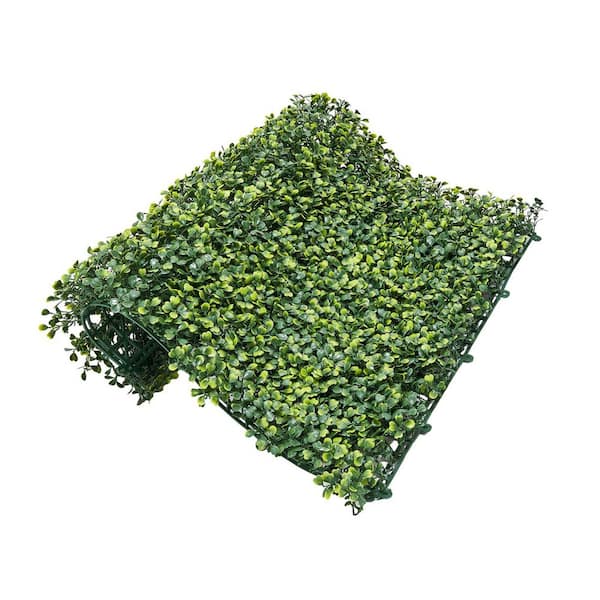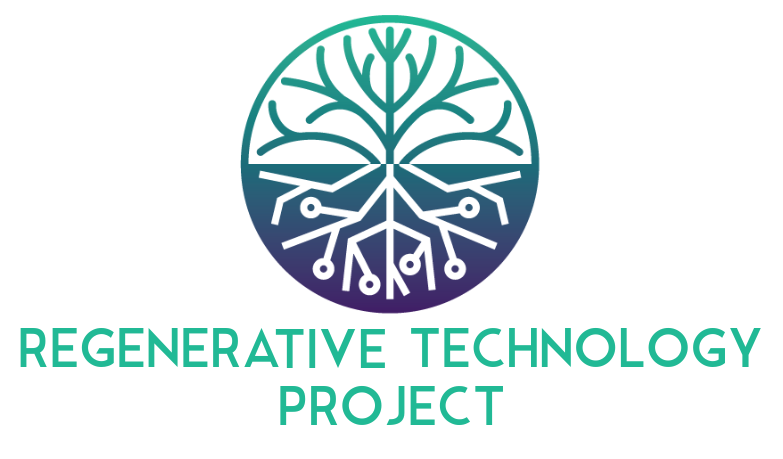
The Living Home: How Biophilic Design and Regenerative Technology are Revolutionizing Green Living
Redefining the “Green” in Green Living: From Passive Efficiency to Active Ecosystems
For decades, the concept of Green Living has been synonymous with reduction: reducing energy consumption, reducing waste, and reducing our overall environmental footprint. We installed better insulation, switched to energy-efficient appliances, and embraced the three R’s—reduce, reuse, recycle. While these principles remain foundational, a revolutionary shift is underway. The future of Sustainable Living is no longer just about being less bad; it’s about being actively good. We are moving from passive, static structures to dynamic, living homes that function as their own miniature ecosystems. This new paradigm integrates cutting-edge Technology for Home with the ancient wisdom of nature, creating spaces that not only shelter us but also heal, nourish, and regenerate the environment around them.
Table of Contents
ToggleThis evolution is rooted in two powerful concepts: biophilic design and regenerative architecture. Together, they are transforming our understanding of what a home can be, turning inert walls into air-purifying lungs and rooftops into vibrant habitats. This article explores this exciting frontier, delving into the technologies and philosophies that are turning our homes into living, breathing partners in creating a healthier planet and promoting our personal Health & Wellness.
What is Biophilic Design?
Biophilic design is based on the concept of “biophilia”—the innate human tendency to seek connections with nature. It’s a design philosophy that goes far beyond simple Home Decor choices like adding a few potted plants. Instead, it involves a deep integration of natural elements into our built environments. This can include maximizing natural light, using natural materials like wood and stone, incorporating water features, and providing direct visual connections to the outdoors. The goal is to create spaces that reduce stress and enhance cognitive function. The positive impact on Mental Health is well-documented; environments rich in natural elements can lower cortisol levels, improve focus, and foster a sense of calm, directly contributing to better Stress Management and Mindfulness.
The Shift to Regenerative Architecture
If biophilic design is about connecting us to nature, regenerative architecture is about making our buildings an active part of it. Traditional sustainable design aims for a net-zero impact, meaning a building produces as much energy as it consumes. Regenerative design takes a bold step further, aiming for a net-positive impact. A regenerative building is designed to give back more than it takes from the environment. This means it might generate surplus clean energy, capture and purify more water than it uses, sequester carbon from the atmosphere, and even enhance local biodiversity. It’s a holistic approach that considers the building’s role within the wider community and ecosystem, touching on principles of Community Living and positive Social Impact.
The Active Skin: How Buildings are Learning to Breathe and Grow
The most visible and exciting innovations in living architecture are happening on the building envelope—the “skin” of the home. Walls, roofs, and windows are being reimagined as active, responsive systems that interact with their environment in real-time. This is a significant leap in Home Improvement, transforming static surfaces into functional, living components.

Bio-Adaptive Facades: The Living, Breathing Wall
Imagine a wall that actively purifies the air. This is the reality of bio-adaptive facades, one of the most groundbreaking developments in regenerative design. These systems often consist of glass panels filled with a liquid medium cultivating microalgae. Through photosynthesis, the algae absorb carbon dioxide and other pollutants (like nitrogen oxides) from the surrounding air, releasing pure oxygen. This process is remarkably efficient; studies have shown that one square meter of an algae facade can absorb as much CO2 as several mature trees.
The benefits don’t stop at air purification. The process generates two valuable byproducts:
- Biomass: The algae multiply rapidly and can be regularly harvested. This biomass can be converted into biofuel to generate heat and electricity for the building, creating a closed-loop energy system. This innovation has profound implications for Personal Finance, promising significant long-term savings on utility bills.
- Thermal Energy: The facade acts as a solar thermal collector, absorbing sunlight and generating heat that can be used for the building’s hot water and heating systems, further reducing reliance on external energy sources.
A real-world case study is the BIQ House in Hamburg, Germany. Its facade is fitted with 129 bioreactors that regulate light and provide shade while generating renewable energy from the algal biomass. This project demonstrates that living architecture is no longer theoretical but a practical, scalable solution.
Green Roofs and Living Walls: More Than Just Aesthetics
While bio-adaptive facades are on the cutting edge, green roofs and living walls are more accessible technologies that offer a multitude of benefits. These systems involve covering a building’s roof or walls with vegetation planted in a growing medium. Far from being a simple Gardening Tips project, they are engineered systems that dramatically improve a building’s performance.
- Energy Efficiency: A green roof provides a powerful layer of insulation, keeping the building cooler in the summer and warmer in the winter. This can reduce heating and cooling costs by up to 25%, a significant factor in long-term Financial Planning.
- Stormwater Management: The vegetation and soil absorb a significant amount of rainwater, reducing runoff into overburdened urban sewer systems and mitigating flood risk.
- Biodiversity and Food Production: These spaces can become habitats for birds and insects, and even serve as sites for Urban Gardening. Growing herbs, vegetables, and fruits provides access to fresh, healthy food, aligning with goals in Nutrition News and Healthy Recipes.
- Improved Air Quality: The plants naturally filter pollutants from the air and convert CO2 into oxygen, contributing to a healthier microclimate.
The Bosco Verticale (“Vertical Forest”) in Milan, Italy, is a stunning example. These two residential towers host over 20,000 trees and perennial plants, equivalent to 7,000 square meters of forest. This project showcases how high-density urban living can coexist with nature, creating a blueprint for future cities focused on Eco-Friendly Living.
The Smart, Sustainable Interior: Health, Wellness, and Efficiency
A living home’s intelligence extends deep within its interior, where Smart Home technology and natural systems converge to create an environment optimized for health, comfort, and efficiency. This is where Interior Design meets ecological science.
Air and Water: The Lungs and Circulatory System of the Home

Indoor air quality is a critical component of Holistic Health. Modern homes, often sealed for energy efficiency, can trap pollutants like VOCs from furniture and cleaning products. A living home addresses this with an integrated approach. This includes energy recovery ventilators (ERVs) that supply fresh, filtered air without losing thermal energy, but also incorporates natural materials. Clay plaster walls, for instance, can naturally regulate indoor humidity, while certain indoor plants are proven to filter common toxins. This focus on clean air is essential for everyone, especially for those with respiratory issues, and contributes to better Sleep Health.
Water systems are similarly re-envisioned. Greywater recycling systems capture water from showers and sinks, filter it, and reuse it for toilet flushing and irrigation. Rainwater harvesting systems collect precipitation for gardening and other non-potable uses. These strategies drastically reduce a household’s water consumption and environmental impact, offering clear Budget Tips through lower utility bills.
Energy and Automation: The Nervous System
The “nervous system” of the living home is its smart automation network. This is what coordinates the active systems to maximize efficiency and responsiveness. For example:
- Sensors can monitor CO2 levels and automatically increase ventilation when needed.
- An integrated system can manage energy flow, deciding in real-time whether to use power from solar panels, store it in a battery, or draw from the energy generated by an algae facade.
- Automated, drip-irrigation systems for green walls and roofs use precise amounts of recycled water, making Plant Care effortless and efficient.
- Smart window glazing can tint automatically to block solar heat gain during the hottest part of the day, reducing the need for air conditioning.
For the growing number of people in Remote Work situations, such an optimized environment can be a game-changer. A home that manages its own climate, air quality, and lighting fosters a healthier and more focused atmosphere, directly boosting Productivity Tips and improving Work-Life Balance.
Bringing the Living Home to Life: Best Practices and Future Horizons

Adopting the principles of a living home doesn’t have to be an all-or-nothing proposition. Both homeowners and builders can take steps, large and small, to move toward a more regenerative model. However, it’s important to be aware of the challenges and best practices.
Best Practices for Homeowners and Builders
- Start Small with DIY Projects: You can begin by incorporating biophilic elements into your Home Decor. Create a small indoor herb garden, install a rainwater barrel for your garden, or even build a small living wall. These projects can be a great way to learn the basics of Sustainable Living.
- Prioritize Natural and Non-Toxic Materials: When renovating or building, choose low-VOC paints, reclaimed wood, natural insulation like cork or wool, and furniture made from sustainable sources. This is not only better for the planet but also for your family’s and Pet Care needs.
- Plan for Integration: For larger projects, work with architects and builders who specialize in green design. A truly effective living home is an integrated system, not just a collection of eco-gadgets. Proper planning is key to ensuring all components work together harmoniously.
- Consider Life-Cycle Costs: While the initial investment for technologies like green roofs or greywater systems can be higher, the long-term savings on energy and water bills often provide a strong return on investment. This is a crucial aspect of smart Financial Planning.
Common Pitfalls to Avoid
- Maintenance Neglect: Living systems are not “set and forget.” Green walls, algae facades, and water filtration systems require regular maintenance. Neglecting this can lead to system failure and costly repairs.
- Ignoring Local Climate: A design that works in a temperate, rainy climate will not be suitable for a hot, arid one. All design choices must be adapted to the local environment to be truly sustainable.
- Over-Complication: While smart technology is powerful, a system that is too complex can be difficult to manage and repair. The best designs often blend high-tech solutions with simple, passive strategies.
Conclusion: A Future Where Our Homes Give Back
The shift toward living architecture represents a profound and inspiring evolution in our relationship with the built environment. We are moving beyond the goal of simply sustaining our presence on this planet and are beginning to design homes that actively participate in its restoration. By weaving together the threads of biophilic design, regenerative technology, and smart automation, we are creating spaces that are not only energy-efficient but also enhance our physical and mental well-being, purify our air and water, and contribute to local ecosystems.
From the microscopic algae working within a glass facade to the sprawling ecosystem of a green roof, these innovations are turning the dream of a truly Eco-Friendly Living space into a tangible reality. The living home is more than just a structure; it is a promise of a future where our daily lives are intrinsically linked with the health of our planet, proving that human ingenuity and the wisdom of nature can come together to build a better world, one breathing wall at a time.
You may also like
Archives
- October 2025
- September 2025
- August 2025
- October 2023
- September 2023
- August 2023
- July 2023
- June 2023
- May 2023
- April 2023
- March 2023
- February 2023
- January 2023
- December 2022
- November 2022
- October 2022
- September 2022
- August 2022
- June 2022
- May 2022
- April 2022
- March 2022
- January 2022
- December 2021
- November 2021
- October 2021
- September 2021
- August 2021
- November 2020
- July 2020
- May 2020
- April 2020
- March 2020
- February 2020
- December 2019
- August 2018
- July 2018
- June 2018
- April 2018
- March 2018
Categories
- Age Groups
- Aging In Place
- Aging Well
- AI/ML
- Alternative Medicine
- Animal Health
- Animals
- Anti-Aging
- Applied AI
- Automation
- Babies
- Baby
- Book Reviews
- Breastfeeding
- Budget Optimization
- Budgeting
- Business
- Career Development
- Career Growth
- Cats
- Chess
- Circular Economy
- Cleaning Tips
- Cloud Computing
- Cognitive Science
- Community
- Community Building
- Community Engagement
- Computer Vision
- Content Strategy
- Cultural Events
- Cycling
- Data Science
- Design Psychology
- Developer Productivity
- Diet
- Diet
- Digital Advertising
- Digital Media
- Digital Wellbeing
- DIY Projects
- Dogs
- Eco-Friendly Living
- Ecology
- Equity Compensation
- Exercise
- Family
- Family Life
- Fashion Tech
- Financial Analysis
- Financial Planning
- Flooring Maintenance
- Food
- Greece
- Greek
- Greek Food
- Hardware Engineering
- Health
- Health & Wellness
- Health And Wellness
- Health Science
- Health Tech
- Healthy Recipes
- Holistic Health
- Holistic Wellness
- Home & Living
- Home Decor
- Home Improvement
- Home Organization
- Housing
- Hydroponics
- Infant Development
- Ingredient Deep Dive
- Interior Design
- Internet of Things
- Investment Strategy
- IoT
- Kids
- Lifestyle
- Lifestyle News
- Literature
- Materials Science
- Media Analysis
- Mental Health
- Miami
- Miami
- Miami Food
- Mind And Body
- Mindfulness
- Minimalism
- Mobile Development
- Natural Beauty
- Natural Cleaning
- Natural Skincare
- Neuroscience
- Nutrition
- Nutrition News
- Operating Systems
- Opinion
- Outdoor Living
- Over 40
- Over 50
- Over 60
- Parenting
- Performance Marketing
- Personal Development
- Personal Finance
- Personal Productivity
- Pet Care
- Pet Safety
- Philosophy
- Politics
- Precision Nutrition
- Prenatal Health
- Productivity
- Protein
- Psychology
- Quantified Self
- Real Estate Investment
- Recipes
- Renovation Planning
- Robotics
- Science
- Seafood
- Security
- Self-Improvement
- Senior Fitness
- Senior Living
- Skincare Science
- Sleep
- Small Space Gardening
- Smart Home
- Smart Homes
- Smoothies
- Social Impact
- Social Responsibility
- Soft Skills
- Spatial Design
- Stress Management
- Supplements
- Sustainable Living
- Sustainable Technology
- Tax Strategy
- Travel
- Uncategorized
- Urban Gardening
- Veggie
- Volunteering
- Wealth Management
- Wearable Technology
- Wellness
- Wood Staining
- Work-Life Balance
- Workplace Culture
- World




Leave a Reply